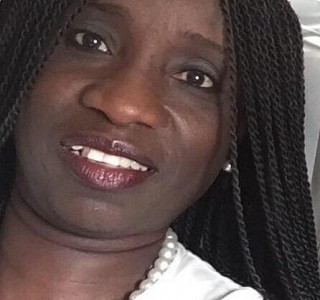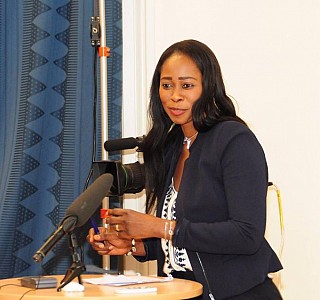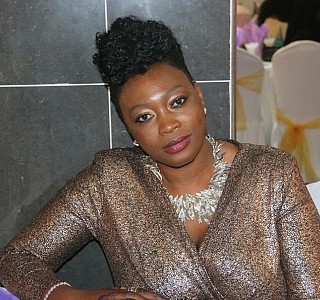Not only have African male athletes successfully honored the continent, there are also female champions who have been able to mark the history of their African countries by raising their flags at different international sport events. In a variety of sports, women from all parts of Africa have been able to impress the world by their great achievements.
Maria Lourdes Mutola (Mozambique)
Maria de Lurdes Mutola, born in 1972 in Maputo, is a Mozambican athlete specializing in mid-distance races, including 800 meters. Also called the “Maputo Express”, Mutola is the only Mozambican athlete in history, including both men and women, to have won a world or Olympic title. She is also the only athlete in history to have won four world or Olympic titles over 800 meters.
During twenty years of competing at the highest level, she won the Olympic title in 2000, three titles at the World Open-Air Championships, as well as seven victories at the World Indoor Championships. She also won five titles at the African Championships, three at the African Games, and two at the Commonwealth Games. This legendary athlete has a career full of great achievements. In addition, Mutola has two world records of 1,000 meters in Brussels (1995) and Stockholm (1999), two 800-meter world championships in 1993 and 2001, first place in the 800-meter World Cup final Meters in 2001 in Lisbon, and a gold medal at the Sydney Olympic Games (2000).
Queen of the 800m, Maria Mutola is also a champion with a big heart. In a historical decision, Maria Mutola didn’t defend her 800-meter Olympic champion title in Athens in 2004. Instead, she decided to withdraw from the high Competition in order to give way to young people. “I’m leaving to give way to young talents who are full of ambition and want to enjoy the podium. I have confidence in them,” says Maria Mutola.


Kirsty Leigh Coventry (Zimbabwe)
Born on 16 September 1983 in Harare, Kirsty Coventry is a Zimbabwean swimmer specializing in backstroke and four medley competitions. She discovered international competition in the late 1990s, and her first participation in the Olympic Games was in 2000 in Sydney. Four years later at the Olympic games of Athens 2004, she became the first individual Olympic champion of her country. She confirmed her new status by winning several awards at the world championships, including two world titles won in 2005 in Montreal. After underperforming in 2006 and 2007, Coventry beat the holder of the world record in February of 2008. A few months later, at the 2008 Summer Olympics, Coventry retained her Olympic title in the 200 backstroke and won three other silver medals. For her excellent performance at the Beijing Olympics, Zimbabwean President Robert Mugabe gave her a check for US $ 100,000. In return, Coventry handed over a portion of this money to charities. President of the Zimbabwe Olympic Committee, Paul Chingoka, described her as “our national treasure”, and President Mugabe himself said she was “a golden girl”.


Tirunesh Dibaba (Ethiopia)
Born in 1985 in Bekoji, Tirunesh Dibaba is an Ethiopian cross-country racer who was able to win three Olympic titles, five world championships on track, and four cross-country championship titles between 2003 and 2013. She is also the only athlete to have achieved the double in 5,000 and 10,000 meters in the same edition of the Beijing Olympic Games in 2008. Additionally, Tirunesh is the first to consecutively win the 10,000 meters during the Games in 2008 and 2012. She is also the current holder of the world record of 5,000 meters- with a time of 14 min 11 s 15- established in Oslo in 2008.
In her second participation in the Marathon distance in London 2017, Tirunesh Dibaba became the third-fastest woman in history, as well as the Ethiopian record holder, when she finished in second place with 2:17:56.


Françoise Mbango (Cameroon)
Françoise Mbango Etone, born on April 14, 1976 in Yaoundé, is a Cameroonian athlete specializing in triple jump. Mbango is the first and only Cameroonian athlete in history to have won a world or Olympic title. She was a gold medalist in triple jumping in Athens in 2004, as well as in Beijing in 2008.
She started her career with a first medal at the 1998 Commonwealth Games in Kuala Lumpur. She then won her first medal in 2001 at the World Championships in Edmonton, finishing second behind Russia’s Tatyana Lebedeva. Only a year later, she won a new silver medal at the Commonwealth Games held in Manchester. At the Olympics in Athens, Mbango later won the title in a competition where she first crossed the 15.30 m- her personal best.
Mbango crossed 14.76 meters at the 2008 African Championships in Addis Ababa, giving her a place to defend her title at the 2008 Olympic Games in Beijing. However, this participation was thanks to an intervention by the International Olympic Committee, since the Cameroonian federation did not want to register her in games despite her performances. In the Beijing competition, she jumped 15.39 meters, which allowed her to win a second Olympic title. Mbango has since lived in France for more than twenty years, and she obtained the French nationality in 2010.


Caster Semenya (South Africa)
Specialist of the 800m, this young athlete from South Africa is a double Olympic champion and triple world champion in this distance. Semenya won the gold medal at the World Championships of Berlin in 2009. From then on, she aroused much controversy. Her appearance pushed the IAAF to subject her to tests of femininity, and they revealed the following: Caster Semenya is intersexed. This means that she is genetically a man, but in a woman’s body.
Her first sporting participation in an international competition dates back to 2008, in which the young athlete competed in the 800m junior world championships. A year later in 2009, Caster won the gold medal at the African Championships in Mauritius. She then became the World Champion in Berlin in 2009, as well as in Daegu in 2011. She also won the gold medal of the Olympic Games in London 2012 and Rio 2016, before she once again became the world champion in London 2017.


Isabelle Sambou (Senegal)
Isabelle Sambou is a Senegalese freestyle wrestler born on the 20th of October, 1980, in Mlomp Haer, Senegal. At the African Wrestling Championships, she is a nine-time gold medalist in less than 51 kg in 2004, 2005, 2007, 2009, 2010, 2011, and 2013, and under 53 kg in 2014 and 2016. Sambo is also a four-time silver medalist in less than 56 kg in 2001, less than 51 kg in 2006, less than 48 kg in 2012, and less than 53 kg in 2015. She too won the bronze medal In 2002 in less than 55 kg, in addition to the 2009 world title of beach wrestling in less than 70 kg.
Isabelle Sambou was crowned as 2015’s “African Wrestler of the Decade” by the World Wrestling Union (WWU). She is a female sports model in Senegal because she represents the strong women in Senegalese sports. Senegal is famous for its traditional sport of Senegalese wrestling, mainly played by men, so Isabelle Sambou appears like a model for all the fighters of this beautiful country. Her nomination as Senegal’s flag bearer to the latest Olympic Games also shows just how important the lady is to the world of sport in Senegal.


Meseret Defar (Ethiopia)
Born in 1983 in Addis Ababa, Meseret Defar is an Ethiopian athlete specializing in long-distance running. She was the Olympic champion of the 5,000 meters in the Olympic Games of both Athens 2004 and London 2012, as well as a bronze medalist in Beijing 2008. She was also the 5000m outdoor world champion twice in Osaka 2007 and Moscow 2013, and a four-time champion on the 3000m indoor track in 2004, 2006, 2008 and 2010. In addition, Defar won a silver and two bronze medals at the 2005, 2009, and 2011 world championships, and two silver medals in 2012 and 2016.
On June 3, 2006 in New York, Meseret Defar broke the world record of 5000m by scoring 14 min 24.s 53. One year later, in February of 2007, she beat another world record in Stuttgart; however, this record was for the time of 8: 23,72 , on the 3000 meters in covered track. In Stockholm 2009, she once again broke the world record of the 5000 meters in covered track with 14:24, 37. All of these achievements have made her a legendary African athlete.


Derartu Tulu (Ethiopia)
Born in the village of Bekoji, in the Arsi region of central Ethiopia in 1969, Derartu Tulu is one of the legendary African runners specializing in long-distance running, including cross country running, road running, and the marathon distance.
Tulu is known as the first African, black female athlete to win an Olympic title. She won the women’s 10000 meters race in the Barcelona Olympics in 1992. Derartu also became the first athlete to win two Olympic titles over the distance of 10,000m, when she won the race in the Olympic games of Sydney in 2000. In addition to three cross-country championships and the London Marathon, the Ethiopian champion also won the world title of 10,000m in Edmonton in 2001. Along with this information, it is interesting to note that Tulu is the cousin of Tirunesh Dibaba.


Nawal El Moutawakel (Morocco)
Moutawakel was a gold medalist at the 1984 Olympic Games on the first 400 meters women’s hurdles. As minister of Moroccan Sports from 2007 to 2009, Nawal El Moutawakel is the first Moroccan, Arab, African, and Muslim woman to win an Olympic gold medal in the 400m hurdles event at the 1984 Los Angeles Olympic Games. This was the first time that the race was included in the program of the Olympic Games
In 1962, Nawal El Moutawakel was born in Casablanca, Morocco. She continued her university studies in the United States, which led her to the position of an athletic coach. In 1995, she became a member of the International Athletics Federation. She later became a member of the International Olympic Committee in 1998, holding important positions on the Executive Board. At the same time, King Hassan II appointed her as Secretary of State for Youth and Sports in Morocco. She once again held this position in 2007 as minister. She is a symbol of the modern Moroccan woman: a figure of a movement of emancipation through sport, culture, and integration with the political life. She is currently Vice-President of the International Olympic Committee, and a member of the Executive Committee of the International Association of Athletics Federations.


Portia Modise ( South Africa)
Portia Modise is a former player of the women’s football team of South Africa. She is the first African female player to reach the 100th goal scored for the national team. She was elected “best player” of the African Championship in 2006.
Portia Modise was born in Soweto, and she began football competitions with the Soweto Ladies in 1996. In 2005, Modise was one of two African women, along with Perpetua Nkwocha, to be nominated as FIFA World Player of the Year, which was won by Germany’s Birgit Prinz.
At the 2006 African Women’s Soccer Championship, Modise scored a goal for the South African national team in the third-place match against Cameroon, and she was voted best player of the tournament. Modise also played for the Fortuna Hjørring, Orlando Pirates, Jomo Cosmos FC, and Palace Super Falcons 6.


















